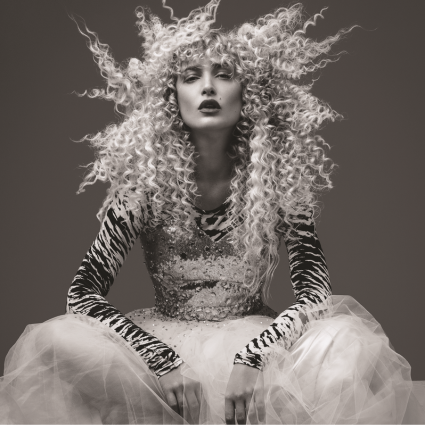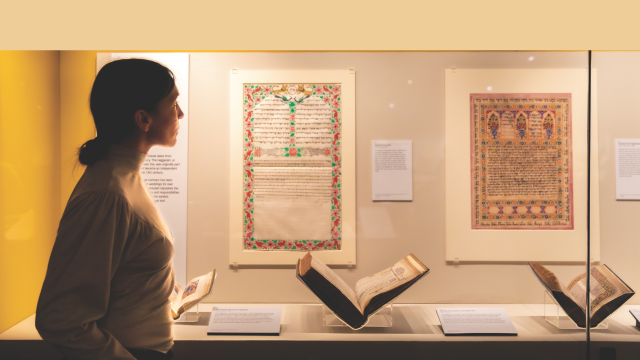-
QUALIFICATIONS
- For Linguists Worldwide
- For UK Public Services
- Preparation
- Policies & Regulation
-
MEMBERSHIP
- Join CIOL
- Membership grades
- NEW for Language Lovers
- Chartered Linguist
- Already a member?
- Professional conduct
- Business & Corporate Partners
-
ASSESSMENTS
- For Second Language Speakers
- English as a Second Language
-
EVENTS & TRAINING
- CPD, Webinars & Training
- CIOL Conference Season 2025
- Events & Networks
- CIOL Mentoring
-
NEWS & VOICES
- News & Voices
- CIOL eNews
- CIOL Awards
- The Linguist
- Jobs & Ads
-
RESOURCES
- For Translators & Interpreters
- For Universities & Students
- Standards & Norms
- CIOL & AI
- All Party Parliamentary Group
- In the UK
- UK Public Services
- Find-a-Linguist
Wear your client's shoes
By Adriana Nesheva

How to fashion the perfect text when translating product descriptions for clothing brands
Product descriptions are a crucial component of fashion brands. While some may consider them boring or unnecessary, they can play a significant role in the purchasing decisions of consumers. When selecting apparel, many want to know more about the products, including details about the material, size and availability. Incomplete or unclear product descriptions, or a lack of localised versions in the consumer’s native language, can lead to lost sales or even legal implications. A misleading translation could, for example, lead to lawsuits or regulatory actions for misselling or false advertising.
Translating product descriptions for fashion brands can be a challenging task. Translators are expected to engage target consumers in the same way as the source-language creatives. Choosing a customised approach is key. Brand style, tone of voice, market differences, conversions, visual content localisation and using the right keywords are some of the things that translators should pay attention to. Transcreation is the best approach and storytelling is an essential element. This can be tailored to the specific geography, psychology and preferences of consumers in the target market.
The strategies I implement in my daily work as a translator for the Bulgarian market include incorporating elements from Bulgarian folklore, using humour, focusing on emotions to engage consumers, making references to Bulgarian landmarks and keeping the text straightforward. For example, I might describe a dress as reflecting the colours and patterns of traditional Bulgarian costumes, or a pair of shoes as comfortable and durable enough to dance the horo (traditional folk dance). By using these techniques, I aim to create a captivating story that resonates with Bulgarian customers and makes them want to buy the product.
Representing the brand
Style and tone of voice are important aspects of fashion product descriptions, as they reflect the personality and identity of the brand. They also help to create a trustworthy relationship with customers and differentiate the brand from its competitors. Therefore it is essential to maintain the brand style, values and message across different languages and markets, while also adapting to the local culture and context.
The translation into Bulgarian usually works well if it is descriptive yet conversational, written in a friendly, appealing and convincing tone. The language should be simple and easy to read. Let’s take the example ‘We are selling pre-loved men’s and women’s clothing, jackets, t-shirts, trousers, shirts, pants, jeans, sports items and shoes.’ The transcreation might read: ‘Предлагаме дамско и мъжко облекло втора употреба, както и якета, тениски, панталони, спортни артикули и обувки‘ (back translation: ‘We offer women’s and men’s second-hand clothing, as well as jackets, t-shirts, pants, sports items and shoes).
It may be obvious that the term ‘pre-loved’ has become ‘second-hand’ in Bulgarian, but I have also reorganised the sentence by adding ‘as well as’, because the original structure was lengthy and difficult to comprehend. Lastly, I substituted ‘selling’ with ‘offer’ to communicate a more refined and less promotional tone, thereby making the text more appealing to the Bulgarian audience.
Special attention is required when it comes to idioms, as literal translation will often sound awkward or make no sense. Various techniques can be employed depending on the nature of the idiom, such as using equivalent expressions or culturally relevant alternatives. For example, I translated ‘It’s an investment in a garment that will stand the test of time’ as Това е инвестиция в дреха, която винаги ще бъде актуална (back translation: ‘It’s an investment in a garment that will always be popular’). There is no direct equivalent for the idiom ‘stand the test of time’, so I turned to cultural adaptation to convey the essence of the original.
Market differences
Addressing market differences is of the utmost importance. There could be different regulations, legislation and authorities, so being aware of the regulations in the target market is essential. For example, a client’s UK-based returns policy cannot be translated directly for the Bulgarian market. Here, you need to adapt the text, taking into consideration factors such as warranties for fashion items, consumer protection laws and consumer rights.
Consulting the client is a must; they probably have a returns policy in place for the target market or can collaborate with their local team to address the issue. Nonetheless, it is translators’ responsibility to flag any misinformation or potential inaccuracies pertaining to the specific market.
Additionally, you need to consider the cultural and social factors that may influence buying behaviour. For example, I may need to adjust the size charts, colour names, currency, payment methods, delivery options and customer service information. By doing so, I can create a product description that is not only accurate and compliant but also persuasive and engaging for Bulgarian shoppers.
Let’s compare the buying behaviours of consumers in the United States and Bulgaria when it comes to payments. In the US, consumers predominantly rely on credit card and digital payments, but this trend has only recently gained popularity in Bulgaria. In many regions of Bulgaria, cash payments, cash on delivery or specific local bank transfers remain prevalent. This tendency is influenced by the Bulgarian mindset, as people exhibit a degree of scepticism and are less inclined to trust unfamiliar brands.
Another area where markets often diverge concerns measurements. Using imperial measures in a country that uses the metric system can be confusing and irrelevant. It can also make the product seem foreign and out of place, which is problematic when you consider that fashion labels want their product descriptions to make consumers feel that the item and text are specifically tailored for them. Conversions are not just a matter of accuracy but also of appeal. In Bulgarian, I would always say 10kg instead of 22lb to connect with the audience. If the consumer has to guess or convert units, it harms their experience and you will probably lose them.
Painting the right picture
Visual content localisation is another important aspect of our work. The colour, size, layout and format of images and buttons should be relevant to the culture of the target audience. Choosing the right image is crucial, as a picture can convey different meanings and emotions for different cultures. Entire marketing campaigns can be ruined if we are not aware of local cultural nuances. For example, a fashion shoot set in a Parisian café may not resonate with Bulgarian consumers, appearing disconnected from their local reality and the lifestyle the brand hopes they will relate to. In such cases, it is necessary to communicate to the client that the image may not be appropriate for the Bulgarian market. Although these issues may appear minor, they can significantly influence how consumers perceive the product.
Keywords and SEO are also key players. If we simply translate the original keywords, they may not attract much traffic or make much sense in the target country. Effective translation requires knowledge of the culture and excellent research skills. For example, in Bulgarian it is common to have several translations for the same word, so ‘bomber jacket’ can be авиаторско and ‘пилотско’ яке. The client might have a specific termbase, but if not, it is the translator’s task to advise them which keywords to use based on their experience of the most commonly used terms in the target country. When in doubt, I look at established fashion websites and check which terms garner most search results.
Translating product descriptions for fashion brands is not just a linguistic task but also a creative and cultural one. It requires knowledge of the brand, the product, its unique features and its benefits, as well as an in-depth understanding of the target audience, their preferences, their values and their aspirations. If you have not lived in the target country, you will not sufficiently understand the mentality of its consumers. When you put yourself in your client’s shoes and address their frustrations, you can create copy that not only informs but also inspires.
Adriana Nesheva is an English to Bulgarian translator with over 13 years’ experience. Specialisation areas include fashion, retail, beauty and cosmetics.
This article is reproduced from the Spring 2024 issue of The Linguist. Download the full edition here.
Filter by category
More
The Chartered Institute of Linguists (CIOL), Incorporated by Royal Charter, Registered in England and Wales Number RC 000808 and the IoL Educational Trust (IoLET), trading as CIOL Qualifications, Company limited by Guarantee, Registered in England and Wales Number 04297497 and Registered Charity Number 1090263. CIOL is a not-for-profit organisation.








